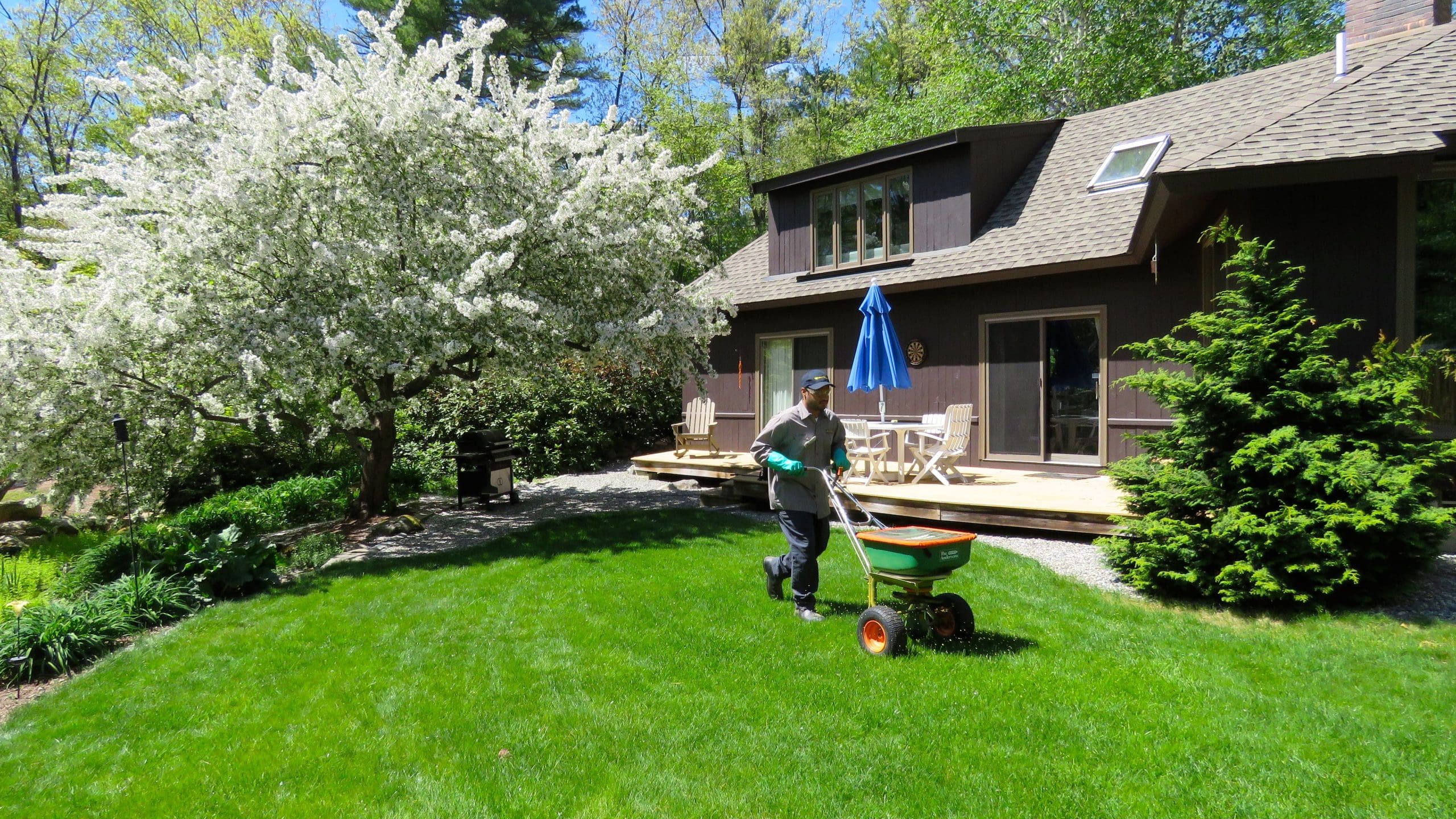
With only one month left on the calendar before it’s time to close the books on 2021, now is the time to be bringing it home on some final lawn care practices.
Ben Hamza, Ph.D., product development associate director with FMC Professional Solutions, weighs in on the best practices for these final fall tasks before winter.
Apply Horticultural Oils
In northern markets, now is the time to apply horticultural oils. As plants go into dormancy, the application of these oils creates a barrier for overwintering insects such as scale or mites. Basically, the oil suffocates the overwintering eggs or adult insects and prevents them from causing damage to the plants next year in the spring.
“They need to be applied when a certain number of hours with air temperature below freezing have occurred,” Hamza says. “It’s usually 28 to 40 hours of accumulated hours where the temperature drops below freezing. That’s the minimum requirement to ensure the plants are dormant.”
Generally, the longer you wait for plant dormancy, the better it would be as LCOs can use the higher rate of horticultural oil.
If the horticultural oils are applied while the plant is still actively growing, they may interfere with the plant’s ability to breathe. Other plants like fine needled conifers do not respond well to being sprayed with horticultural oils.
“They may not tolerate the horticultural oil sprays because they continue to exchange their oxygen and breathe and sometimes the horticultural oils may interfere with gas exchange and may cause it may cause injury,” Hamza says.
While temperatures below freezing need to accumulate over time for plants have become dormant, the application of horticultural oil needs to be applied at temperatures above 34-35 degrees, as there’s a potential for injury otherwise.
Hamza says there is no need to spray plants that are not susceptible to overwintering pests. LCOs need to follow the label directions for horticultural oils. These applications often target the stems, branches, and trunks, but for some plants they target the foliage. Technicians should also check there is proper agitation so to ensure oil and water mixture uniformity.
Timing Dormant Seeding
LCOs can be asked by customers to do seeding outside the traditional window in the fall. This is common for sports fields, but residential clients can request dormant seeding as well. The guidance is to wait as late as possible in the fall before the snow falls and then seed at that time.
“The idea with dormant seeding is that seed is on the ground and then won’t have the ability to germinate all at once, but it adheres to the soil,” Hamza says. “The value of that seeding is that in the spring as soon as the snow melts, then that seed is already in the ground and it germinates very quickly.”
Hamza says the risk of dormant seeding is if the weather turns milder in late November or early December. The seeds could start to germinate, and a cold snap could kill the seedlings before they have hardened off. If the seedling has hardened off, it will go dormant.
Dormant seeding is only for cool-season grasses and is a good fit for sports turf that remains in use late in the fall or if a customer really wants their seeding done so they can get a faster start in the spring. Hamza advises educating your clients on the risk of dormant seeding first.
He also suggests considering your seeding rates and go for a higher seed rate to account for potential injury.
Amend the Soil
Because soil amendments work independent of soil and air temperatures, LCOs can go about amending the soil all the way up until there is snow cover on the ground.
Depending on the geography in the U.S., the soil may need to be amended with lime if the soil is acidic. While sulfur should be added to soils that are alkaline.
Soil tests can help LCOs determine the soil pH and how much lime or sulfur is needed.
Winterize Equipment
While things slow down, this is a prime time to follow the maintenance recommendations for all of the equipment in the shop making sure they are clean, greased and stored safely away for the winter.
“As they wrap up the season they need to start thinking about shutting things down and winterizing equipment,” Hamza says.
For trucks that may be parked outside during freeing months, ensure the pumps, spray lines and tanks are all winterized. Hamza says LCOs should have a winter checklist of everything that needs maintenance.
Created in partnership with the experts at FMC True Champions

